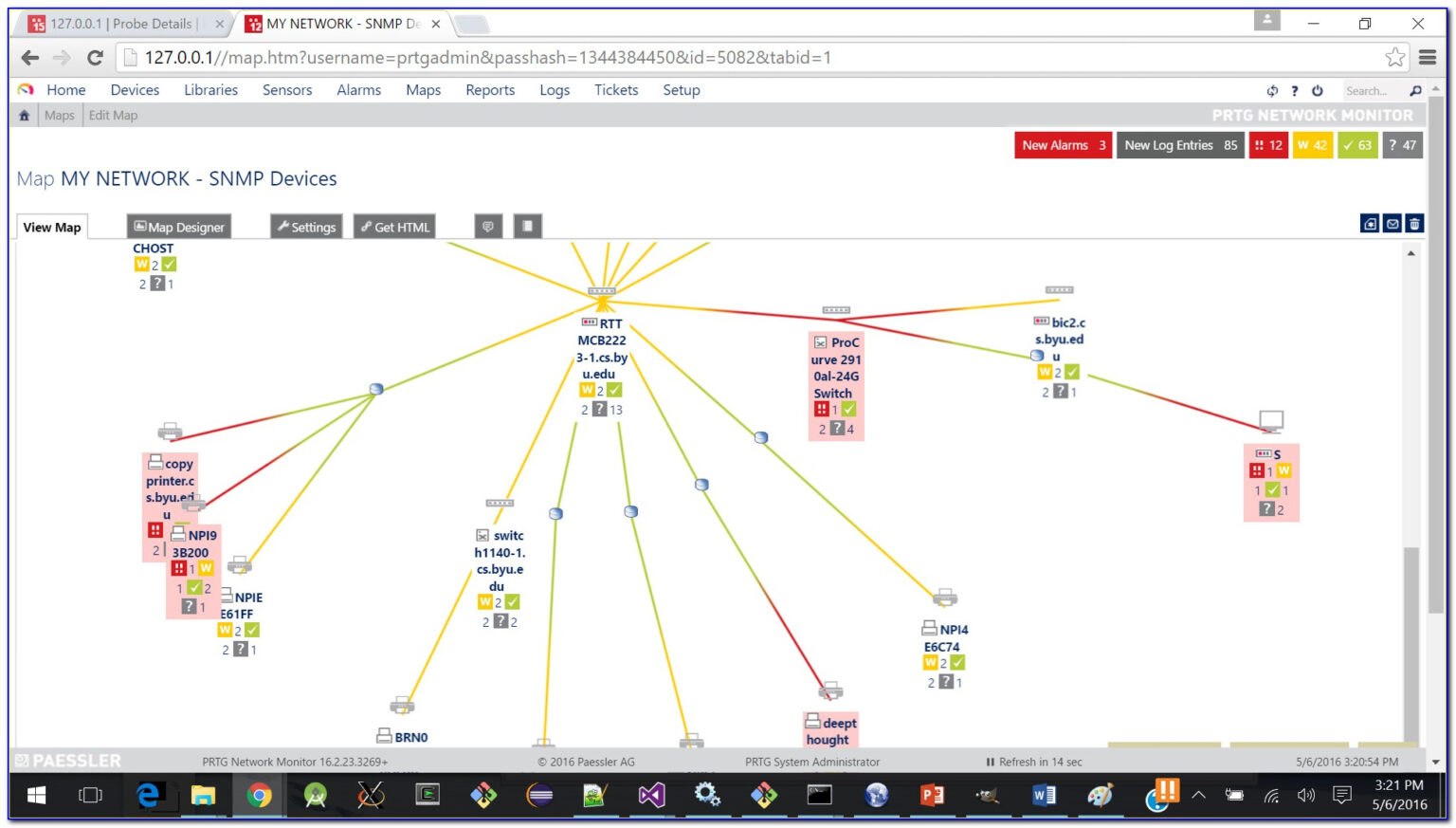

- #Prtg map designer examples how to#
- #Prtg map designer examples code#
- #Prtg map designer examples free#
A map item for an audible alert that plays a sound when the number of alarms of the monitored object is > 0 is also available.
#Prtg map designer examples code#
Additionally, you can add traffic lights or the QR code of an object to your map. For some sensors, a mini graph is shown as well. This indicates how many sensors show a specific status. You can see the object name and a sensor overview for the object. The items in this category are independent from the selected objects in the device tree.Ĭhoose from various sensor status icons in different styles. Use the category Geo Maps if you want to show geographical maps that include monitoring locations.
#Prtg map designer examples free#
Here, only the icon is displayed without additional object data.Ĭhoose from various free or public domain geographical maps from different sources. Icons A (Static), Icons B (Static), Icons C (Static)Ĭhoose from the same icons as in the category described above. Icons from this category also display object data. For some sensors, a mini graph is shown as well.Ĭhoose from various icons that represent typical network devices. Default icons from category A also display object data.

Select the appearance of a map item from different categories.Ĭhoose from various icons that represent typical network devices in the style of the PRTG web interface.
#Prtg map designer examples how to#
Use the Properties section to define how to display the map item, for example, as an icon, a map, a table, or a graph. To enlarge the section, drag the right border to the right. Drag the right border to the left to make the section smaller. You can adapt the size of the Device Tree section. If you select a map item and double-click an object in the device tree, the map designer replaces the map item. If you drag the object onto an existing map item, the displayed device tree object is replaced while the property and size stay the same.ĭouble-click an object in the device tree to add a new map item. You can always drag any object from the device tree onto a free area of the map to create a new map item.



 0 kommentar(er)
0 kommentar(er)
